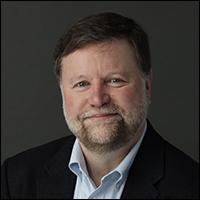Robert Sutor leads a cross-disciplinary team at IBM that has created industry’s first initiative to build quantum computers for business and science. Today, IBM Q has close to 100,000 users within a network of Fortune 500 companies, universities and startups that collaborate with IBM Research to advance quantum computing.
Computer scientists say superfast quantum computers could speed up the discovery of new medicines, crack complex cryptographic security systems, design new materials, model climate change, and supercharge artificial intelligence.

“In the last two and a half years, quantum computing has gone from ‘I wonder if it will happen in my lifetime?’ to the IBM Q Experience network,” Sutor said.
“So far, over 94,000 people have accessed IBM quantum computers in the cloud. They’ve run over five million experiments and written 110 papers,” Sutor said in a Sept. 2, 2018, BBC article.
Sutor, vice president for IBM Q Strategy and Ecosystem at IBM Research, will deliver the Vanderbilt School of Engineering’s John R. and Donna S. Hall Engineering Lecture Thursday, Sept. 20, at 4:10 p.m. in Jacobs Believed in Me Auditorium, Featheringill Hall. A reception will follow in Adams Atrium. The lecture is free and open to the public.
Sutor’s visit is part of a two-day celebration of IBM support at Vanderbilt University.
In his lecture – “Quantum Computing: Don’t Count Your Qubits Before They’re Hatched” – Sutor will discuss the basics of the technology, the motivation for quantum computing, and the outlook for the future. “I’ll especially emphasize the roles academic institutions will have in research and in driving the next generation of educated potential quantum computer users,” Sutor said. IBM Q quantum devices are accessed using Qiskit, a modular, open-source programming framework.
Computers work by manipulating bits that exist in one of two states: a 0 or a 1. Quantum computers aren’t limited to two states. They encode information as quantum bits, or qubits, which can exist in superposition.

Qubits represent atoms, ions, photons or electrons and their respective control devices that are working together to act as computer memory and a processor. Because a quantum computer can contain these multiple states simultaneously, it has the potential to be millions of times more powerful than today’s most powerful supercomputers.
As vice president of IBM Q, Sutor is responsible for driving the strategy, ecosystem and the awareness of the quantum computing program. While based at IBM Research headquarters in Yorktown Heights, New York, Sutor travels the world to meet with clients, speak at conferences and universities, and as a primary spokesman for IBM Q to media and to industry analysts.
Sutor has been with IBM for 35 years, more than 20 of them in IBM Research. He has led large global teams of scientists, software engineers and designers whose work was often mathematically based, including artificial intelligence technologies like machine learning, deep learning, text and image analytics, statistics, predictive analytics and optimization. Sutor co-led the IBM Research effort to support the company’s commercial blockchain efforts with advanced innovations across a broad range of its embedded technologies.
Sutor has an undergraduate degree from Harvard College and a Ph.D. from Princeton University, both in mathematics.
The John R. and Donna S. Hall Engineering Lecture Series was established in 2002 to allow the Vanderbilt Engineering community hear renowned engineers from universities, agencies, and industry address engineering topics of particular interest. The series is funded by an endowment founded by James Gray to honor the Halls. John Hall, a 1955 Vanderbilt engineering graduate, is retired chairman and chief executive officer of Ashland, Inc.
Contact: Brenda Ellis, (615) 343-6314
brenda.ellis@vanderbilt.edu